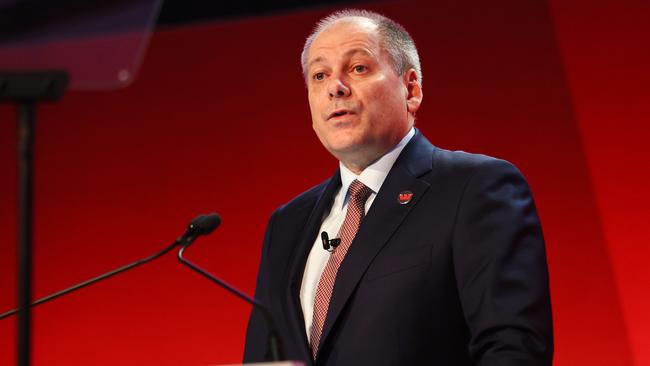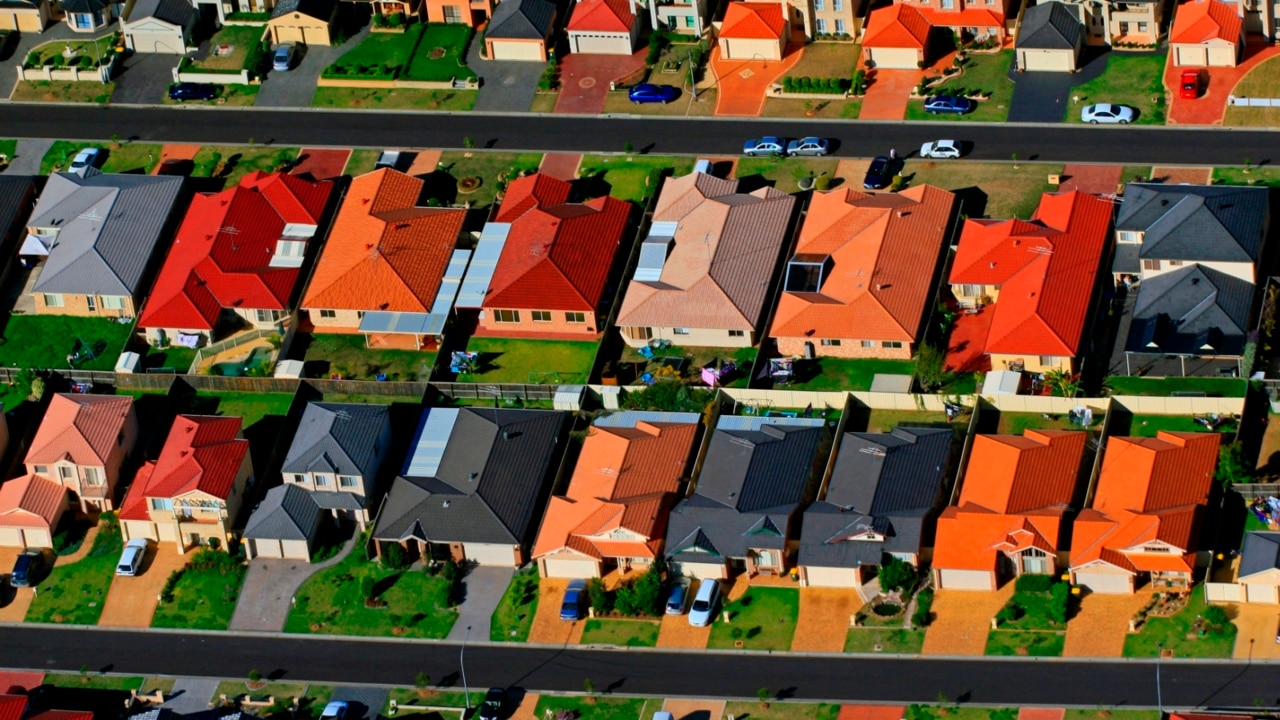Westpac upgrades outlook on jobs and property in resilient economy despite profit dip
Westpac management upgraded their working forecasts for unemployment as well as residential and commercial property prices this year, citing a cooling but resilient economy.

Westpac management upgraded their working forecasts for unemployment as well as residential and commercial property prices this year, citing a cooling but resilient economy in the face of higher interest rates they said “should” fall within a year.
In a trading update revealing first quarter profit shrunk 6 per cent due to temporary hedging losses, Australia’s second largest mortgage seller said arrears had ticked higher but remained below historical levels, while stress across several business sectors had come down.
“The economic slowdown, combined with abating inflationary pressures, should provide scope for monetary policy to become less restrictive within the next year,” chief executive officer Peter King said.
“We expect the economy to remain resilient, supported by low unemployment and healthy corporate sector balance sheets.”
Westpac management’s working “base case” economic forecast as of December 2023 now factor the unemployment rate falling to 4.5 per cent this year, from 4.1 per cent currently. The new working forecast is better than its previous expectation for unemployment reaching 4.7 per cent in 2024.
Westpac calculates loan loss provisions based on these macroeconomic forecasts, which helps the bank predict and prepare for future bad debt losses.
Westpac’s base case economic scenario now also factors in a 6 per cent increase in residential property prices and a 5.4 per cent increase in commercial property values in 2024.
That is better than the 4 per cent increase in home prices and 0.5 per cent fall in commercial real estate prices that was factored in its estimate of credit losses as of September 2023.
The base scenario still accounts for a fall in economic growth to 1.6 per cent this year, before GDP rebounds to 2.5 per cent in 2025. Westpac’s working scenarios don’t include published inflation or interest rate forecasts, but its chief economist Luci Ellis expects the RBA could start cutting rates in September.
Westpac has over $1.5bn in excess provisions above their base case economic scenario for a total $5.1bn, up from $4.9bn as of December.
“We saw a reduction in business stress while a rise in 90-plus day mortgage delinquencies reflects the tougher economic environment,” Mr King said in the statement accompanying the limited quarterly update.
“Risk management remains a priority,” he added.
“We continue to prioritise financial strength with capital, funding and liquidity well above regulatory minimums.”

Stress in the construction, retail, tourism, mining, services, property and manufacturing sectors declined during the quarter. While stressed exposures in agriculture, transport and retail trading sectors rose.
Westpac assigns a 50 per cent probability to its base case scenario and a 45 per cent chance to a more adverse economic setting that would lead to higher expected credit losses than the base case.
The bank increased collective and individually assessed provisions to reflect a tick up in mortgage arrears but cut its mortgage risk overlay.
Despite overdue loans ticking up during the quarter, only about one percent of home loan customers in Australia were behind on their repayments and 76 per cent of them were ahead, the bank said.
The update said its first-quarter profit had been 6 per cent lower than the quarterly average of the previous six months due to temporary hedge accounting.
But excluding losses from interest rate hedging that it said will unwind over time, underlying profit of $1.8bn was in line with the second half 2023 average.
Analysts expected Westpac’s “run-rate” net profit for the quarter to come at $1.65bn, according to brokers polled by Visible Alpha.
Expenses fell 6 per cent compared to the average of the previous half, and were 10 per cent lower than in the September quarter, driven by a 2 per cent reduction in full time employee numbers.
As part of its “cost reset” program, the Sydney-based lender shed more than a 1,000 jobs last year, according to Finance Sector Union numbers.
Excluding the one off items it calls “notable items,” costs grew 2 per cent in the half.
Net interest margin, a key gauge of bank profitability measuring the rate it earns on loans compared to the interest it pays on deposits, had shrunk 0.17 percentage points to 1.78 per cent during the quarter.
The largest impact had been a 0.15 percentage point hit from “hedging items that will reverse over time,” it said. Excluding the notable items pre-provision profit grew 1 per cent, while its “core” NIM, which excludes one-off items and market income was down 0.04 per cent to 1.80 per cent
“This has been a solid quarter in which we’ve grown the franchise and maintained a strong financial position,” Mr King said.
The result was well received by stockbrokers, who said the bank’s underlying numbers were better than feared thanks to strong markets and treasury revenues.
“We expect the extent of relative disappointment reflected in Westpac’s share price to continue to dissipate on the back of this update,” said E&P Capital banking analyst Azib Khan.
“Costs have been a problem for Westpac in recent times, so it is pleasing to see costs for the quarter come in 2 per cent better than” expectations, he said.
At UBS, John Storey said the noise from the hedging items had been a “large distortion to underlying profitability”, but that the reduction in employee numbers and stable core margins had been positive.
Saxo Asia Pacific senior sales trader Junvum Kim said Westpac’s net profit result had been “disappointing,” but that excluding the hedge accounting losses, the numbers showed “resilience, despite a declining net interest margin.”
“While the drop in net profit reflects tough economic conditions, the reduction in stressed assets indicates ongoing credit quality,” he said.
Westpac shares fell as much as 0.94 per cent on Monday morning following the result before recovering to $25.28 each, their highest price since October 2022. The stock closed 2.7 per cent higher at $25.24.







To join the conversation, please log in. Don't have an account? Register
Join the conversation, you are commenting as Logout